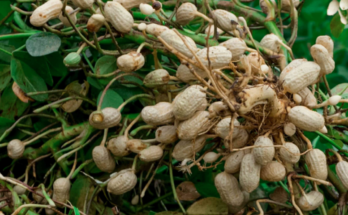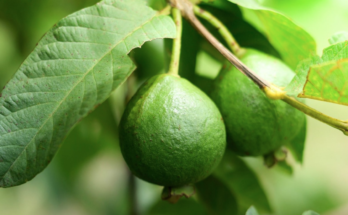Welcome to my guide on Growing Mangoes And how to grow mango trees from seed and master the art of growing mango trees from seed!
As a seasoned gardener, I’ve delved deep into the intricacies of nurturing these luscious fruits from their very beginnings. There’s something truly rewarding about watching a tiny seedling transform into a flourishing mango tree, bearing sweet, succulent fruit.
In this comprehensive introduction, I’ll share my expertise on mango cultivation from start to finish, offering valuable insights and practical tips along the way. Whether you’re a novice enthusiast or a seasoned green thumb, there’s always something new to learn about the mango growing process.
Join me on this journey as we explore the fascinating world of mango propagation and uncover the secrets to cultivating thriving mango trees right in your own backyard. Let’s dive in and discover the joys of growing your own mangoes from seed!
Growing Mangoes And How To Grow Mango Trees From Seed?
Growing mangoes from seed is an exciting journey. To start, choose a ripe mango. Remove the seeds and clean. Let it dry for a few days. Then, remove the hard outer shell. Plant the seeds in a mixture of composted manure and soil in well-drained pots.

Keep it moist but not waterlogged. Provide warmth and sunlight. Germination usually takes 2-4 weeks. Once sprouted, transplant the seedlings into a larger pot.

Make sure it gets plenty of sunlight and water regularly. With patience and care, your mango tree will grow in a few months. Enjoy the rewarding experience of growing mango trees from seed! Read on!
The 10 Steps For Growing Mangoes And How To Grow Mango Trees From Seed
1. Selecting the Perfect Mango
Choosing the right mango is crucial for successful seed propagation. Look for a mango that’s fully ripe but not overripe.
The skin should have a vibrant color, whether it’s a deep red, golden yellow, or green depending on the variety. Additionally, give it a gentle squeeze to check for firmness – it should yield slightly under pressure without feeling mushy.
A ripe mango will also emit a sweet, fragrant aroma from the stem end, signaling its readiness to be enjoyed and its seed ready for planting.

2. Extracting the Seed
After selecting the perfect mango, carefully cut around the seed to remove it from the flesh. Take your time to avoid damaging the seed as you extract it.
Once removed, rinse the seed under cool running water to remove any remaining fruit pulp. It’s essential to ensure the seed is clean before proceeding to the next step.
3. Preparing the Seed for Planting
Allow the cleaned seed to air dry for a few days in a well-ventilated area. This drying period helps prevent fungal growth and rot during germination.
Once the seed is dry, it’s time to remove the outer husk. Use a sharp knife to carefully score around the seed’s circumference, then gently pry off the husk. Be cautious not to damage the inner seed during this process.
4. Choosing the Right Potting Mix
Selecting the appropriate potting mix is vital for providing the optimal growing conditions for your mango seed. A well-draining mix is essential to prevent waterlogging, which can lead to root rot.
A blend of peat moss, perlite, and vermiculite provides excellent aeration and moisture retention while allowing excess water to drain away effectively.
5. Planting the Seed
Fill a small pot with the chosen potting mix, leaving about an inch of space at the top to accommodate watering.

Plant the mango seed vertically in the center of the pot, with the pointed end facing downward and the flat end facing upward. Gently press the seed into the soil, ensuring it’s firmly anchored in place.
6. Providing Optimal Conditions for Germination
Place the potted seed in a warm, sunny location to encourage germination. Ideally, the temperature should be maintained between 70-80°F (21-27°C).
You can create a mini greenhouse effect by covering the pot with clear plastic wrap, which helps retain moisture and warmth. Check the soil regularly to ensure it stays consistently moist but not waterlogged.
7. Patience During Germination
Germination is a process that requires patience. It can take anywhere from 2 to 4 weeks for the mango seed to sprout, depending on various factors such as temperature and moisture levels. During this time, resist the urge to disturb the seed or overwater it. Instead, monitor the soil moisture regularly and provide gentle care as needed.
8. Transplanting the Seedling
Once the seedling has developed several sets of true leaves and outgrown its initial pot, it’s time to transplant it into a larger container.
Choose a pot that provides ample room for root growth, typically at least 12 inches in diameter. Gently loosen the soil around the seedling’s roots and carefully lift it out of the pot, taking care not to damage the delicate roots.
9. Caring for Your Mango Tree
After transplanting, place the mango tree in a sunny location where it will receive plenty of direct sunlight each day. Water the tree regularly, ensuring the soil stays consistently moist but not soggy.
During the growing season, fertilize the tree every few weeks with a balanced fertilizer to provide essential nutrients for healthy growth and fruit development.
10. Enjoying the Fruits of Your Labor
With diligent care and patience, your mango tree will grow into a robust, fruit-bearing specimen in a few years.
As the tree matures and begins to produce fruit, savor the satisfaction of knowing that you’ve nurtured it from a humble seed to a bountiful source of delicious mangoes.
A Little Mango Plant’s Common Problems And Pest Prevention
Common problems and pest control of a small mango tree
A little mango plant, though fragile, is not immune to common problems and pests that can hamper its growth.
Primary concerns for young mango trees include fungal diseases such as anthracnose and powdery mildew, which can stunt growth and damage leaves and fruit.
To prevent these diseases, ensure adequate airflow around plants, avoid overhead watering and apply fungicides when necessary.
Below are some more solutions
1. Pest Infestation: Pests like fruit flies and scale insects can pose a threat to young mango trees, causing leaf and fruit damage.
Regular inspections and early intervention are important to prevent infections from progressing and causing significant damage.
2. Nutrient deficiency: Nutrient deficiency can occur in young mango trees, resulting in stunted growth and poor fruit development. Regular soil testing and proper fertilization can help correct any deficiencies and promote healthy growth.
3. Environmental stress: Environmental factors such as extreme temperatures or drought can stress young mango trees, making them more vulnerable to diseases and pests.
Adequate watering, mulching and protection from harsh weather can help reduce stress and increase resilience.
4. Improper care: Improper care practices such as improper watering, pruning or transplanting can weaken young mango trees and make them more susceptible to problems.
Following proper care guidelines, including watering at the base of the plant, proper pruning techniques, and planting in well-draining soil, can help maintain plant health and vigor.
How to Transplant Mango Seedlings
Transplanting mango seedlings is a crucial step in their growth journey, ensuring they have ample space to develop strong root systems and thrive into healthy trees.
Begin by selecting a well-draining location with plenty of sunlight. Carefully remove the seedling from its current container, being mindful not to disturb the delicate roots.
Dig a hole in the new planting site, ensuring it’s deep and wide enough to accommodate the roots without bending or crowding.
Place the seedling in the hole at the same depth it was previously growing and backfill with soil, gently firming it around the base of the plant.
Water the newly transplanted seedlings thoroughly to help settle the soil and reduce transplant shock. Continue to provide regular water and monitor the plant for signs of stress as it adjusts to its new environment.
With proper care, your transplanted mango seedling will establish itself and flourish in its new home.
FAQ
Can I grow a mango tree from seed?
Yes, you can grow a mango tree from seed. However, keep in mind that the tree may not produce fruit identical to the parent plant and may take several years to bear fruit.
What is the best time to plant mango seeds?
The best time to plant mango seeds is during the warmer months when temperatures are consistently above 70°F (21°C). This provides optimal conditions for germination and early growth.
How long does it take for a mango seed to germinate?
Mango seeds typically germinate within 2 to 4 weeks under ideal conditions. However, germination time can vary depending on factors such as temperature, humidity, and seed quality.
Conclusion
In conclusion, growing mangoes and learning how to grow mango trees from seed is a rewarding journey that offers both challenges and fulfillment. From selecting the perfect mango and extracting the seed to nurturing the seedling into a thriving tree, each step requires patience, care, and attention.
By following the proper techniques for seed preparation, planting, and maintenance, anyone can successfully grow a mango tree right in their own backyard.
So, whether you’re a novice enthusiast or a seasoned gardener, I encourage you to embark on this adventure and experience the satisfaction of growing your own mangoes from seed.
With diligent care and patience, your mango tree will grow into a robust, fruit-bearing specimen in a few years’ time. As the tree matures and begins to produce fruit, savor the satisfaction of knowing that you’ve nurtured it from a humble seed to a bountiful source of delicious mangoes.
Share the fruits of your labor with friends and family, spreading the joy of homegrown mangoes far and wide. Happy growing mangoes! Happy gardening!



